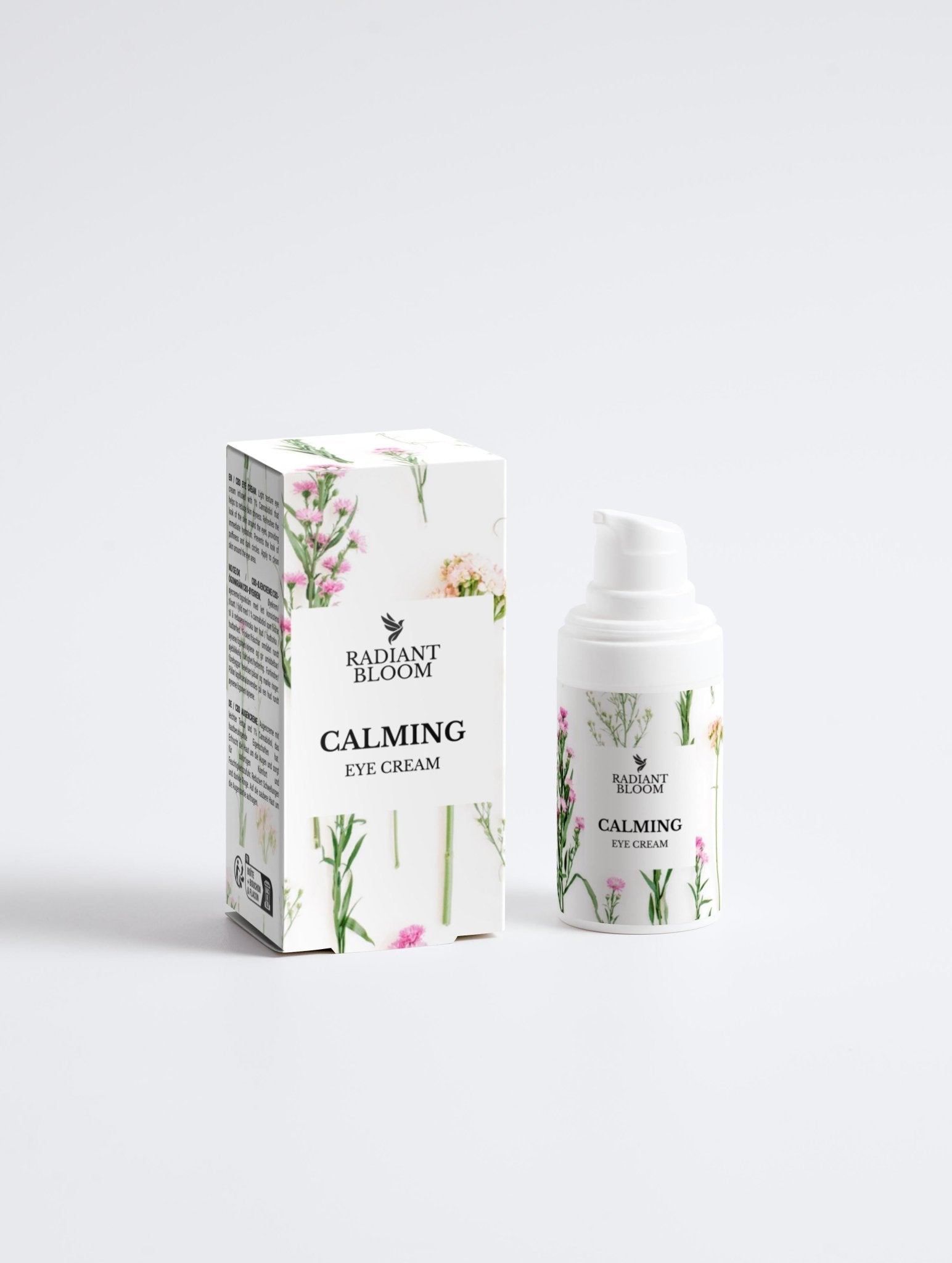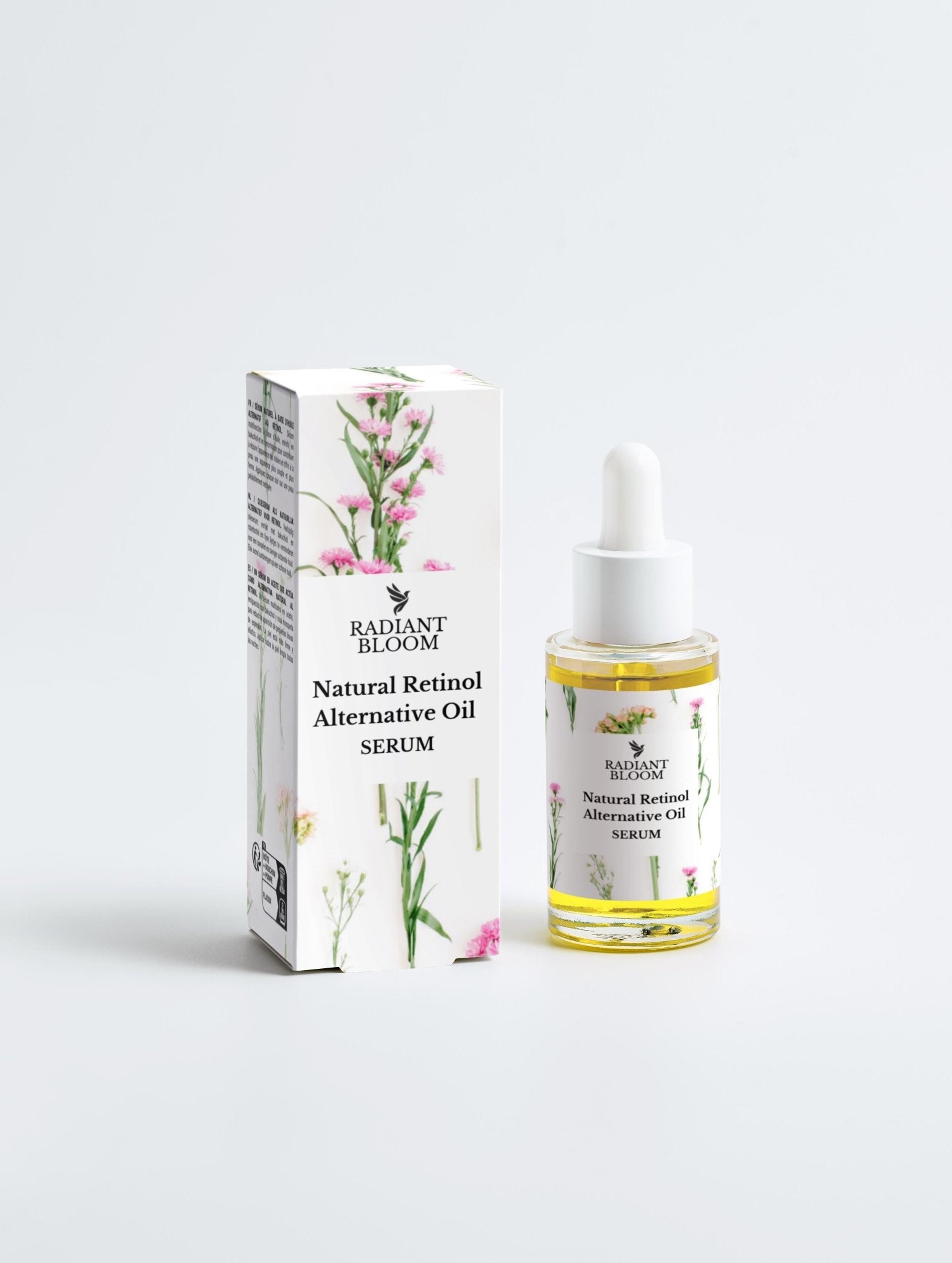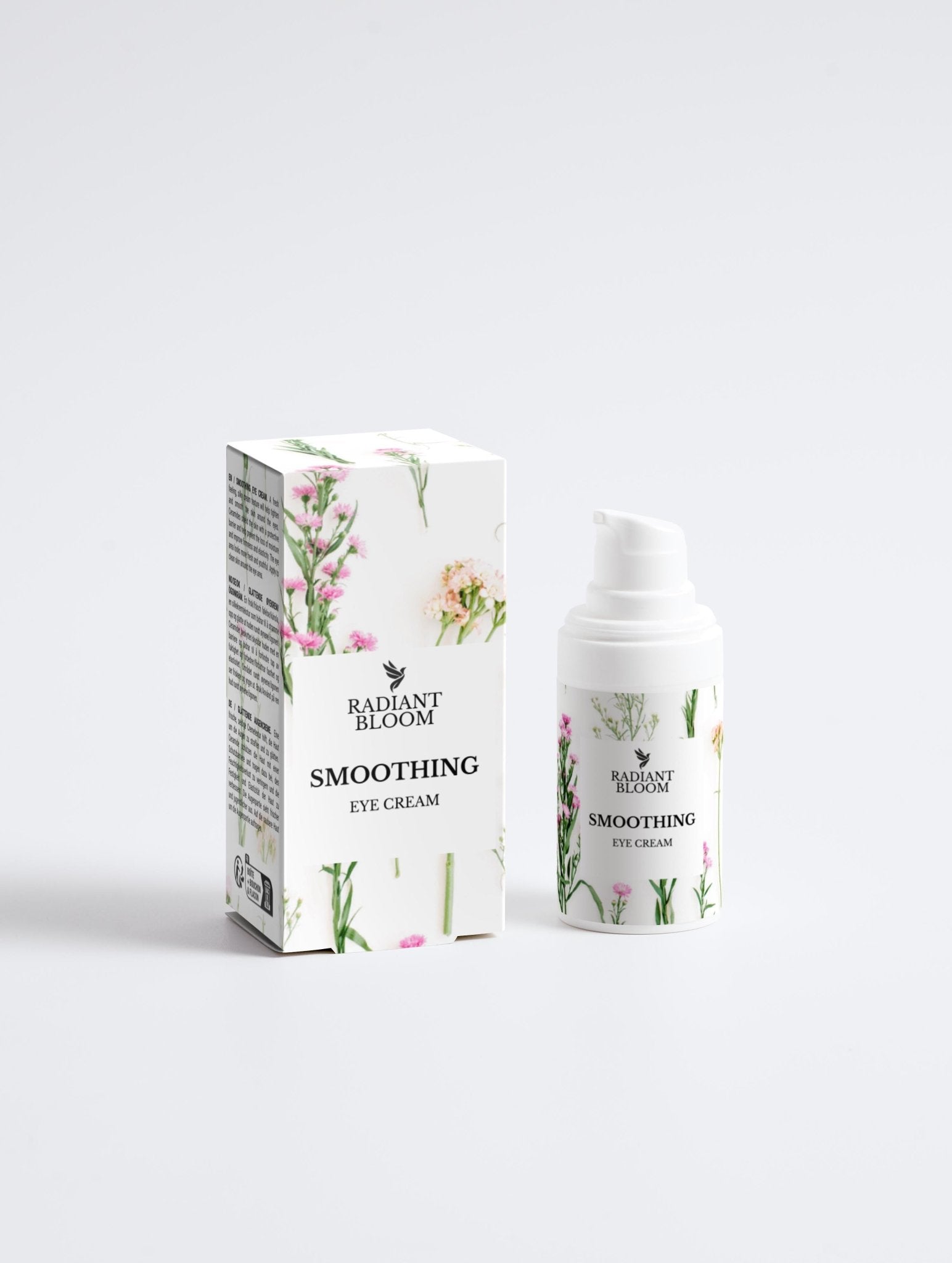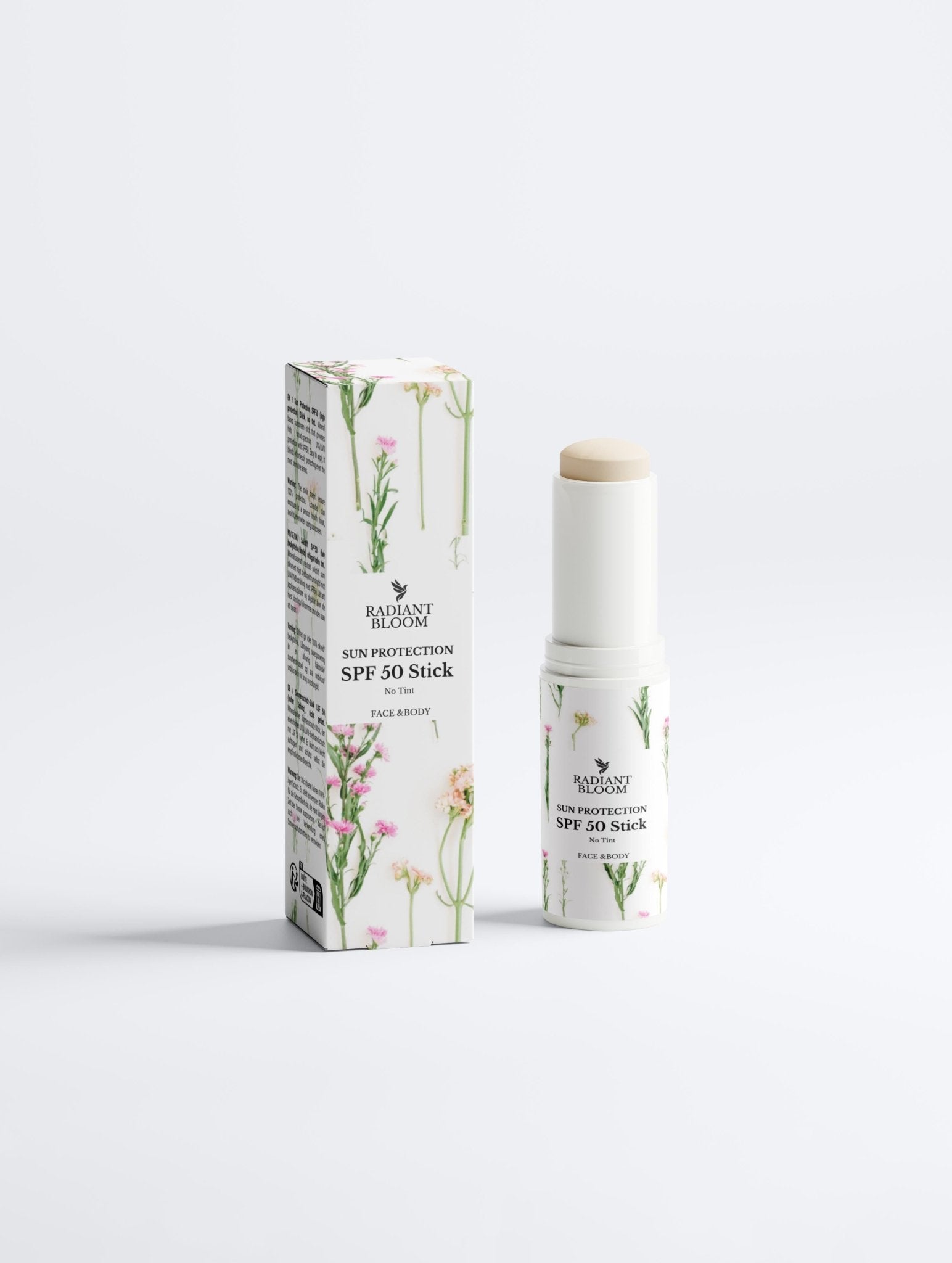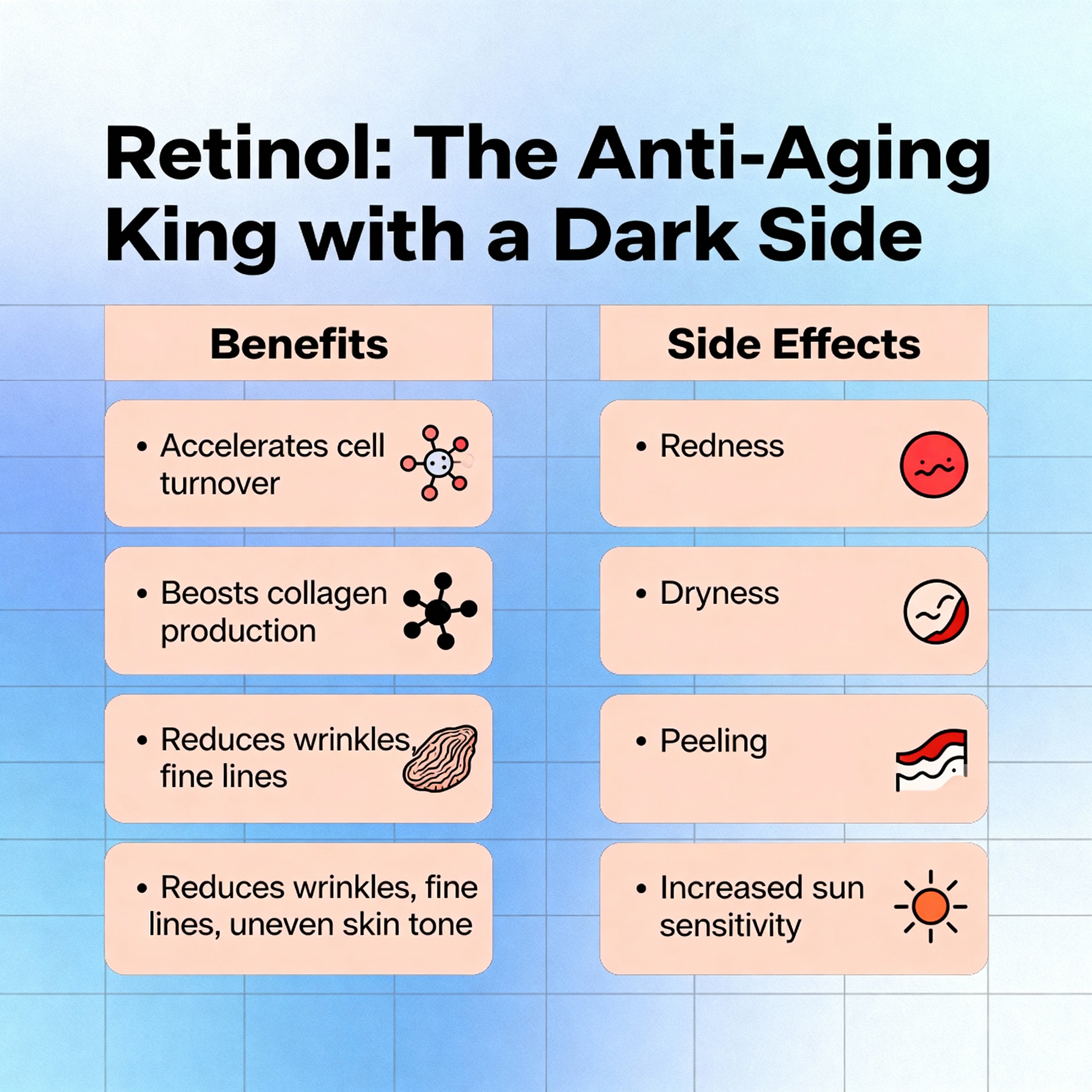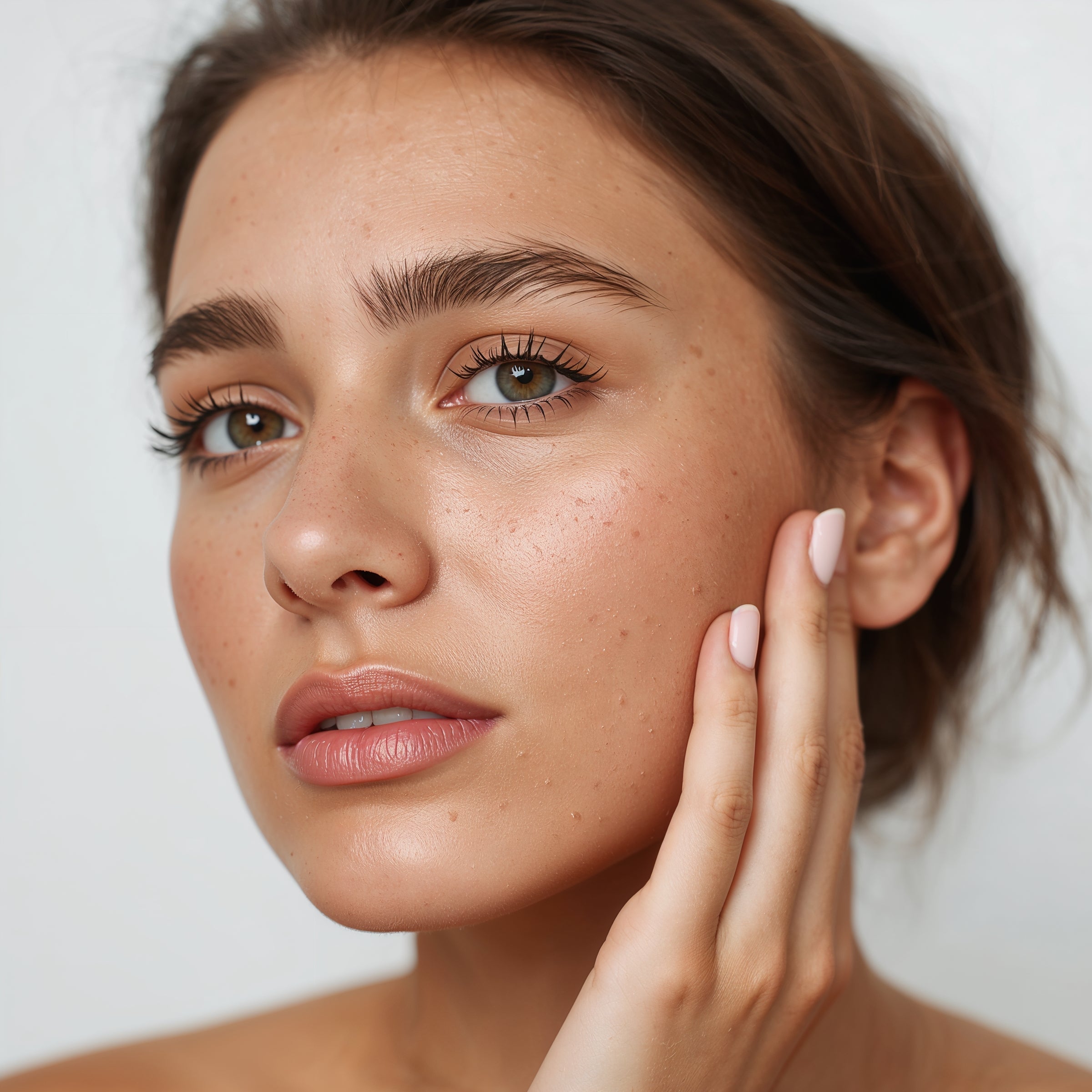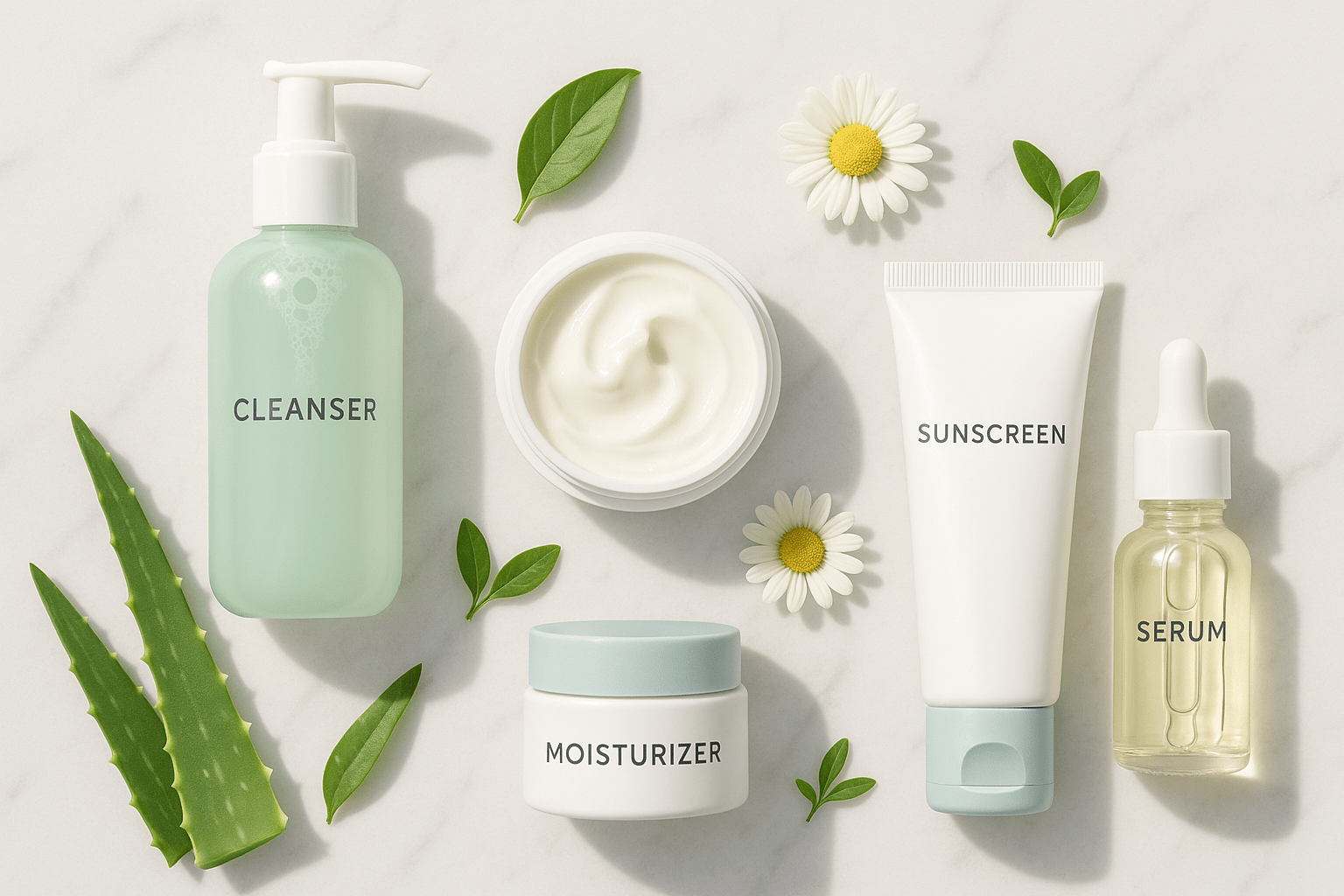What is CICA in Skincare? The Complete Guide to Nature's Healing Miracle
Last Updated: August 2025 | 13 min read
Quick Answer: CICA (Centella Asiatica) is a medicinal herb known as "tiger grass" that's been used for centuries in traditional medicine. In skincare, CICA calms inflammation, speeds wound healing, strengthens the skin barrier, and reduces redness, making it perfect for sensitive, acne-prone, or damaged skin. Natural CICA products like those from Radiant Bloom Organic offer pure, concentrated healing without synthetic additives.
Table of Contents
- The CICA Revolution in Skincare
- What Exactly is CICA?
- The Science Behind CICA's Healing Powers
- CICA Benefits for Different Skin Types
- CICA vs Other Calming Ingredients
- How to Use CICA in Your Routine
- Natural CICA Products vs Synthetic Formulations
- CICA for Specific Skin Conditions
- DIY CICA Treatments
- Choosing the Right CICA Products
- CICA Myths and Facts
- FAQ
The CICA Revolution in Skincare
CICA has taken the skincare world by storm, becoming one of the most searched ingredients of 2024-2025. But this "overnight sensation" has actually been healing skin for over 3,000 years.
The CICA Phenomenon
- Market Impact:
- CICA product sales increased 450% since 2022
- Over 2,000 new CICA launches in 2024
- #CicaCream has 890 million views on TikTok
- 87% of dermatologists recommend CICA for sensitive skin
Why CICA, Why Now?
- Pandemic skin issues - Mask irritation created demand
- Clean beauty movement - Natural healing appeals
- K-beauty influence - Korean brands popularized it
- Scientific validation - Research proves effectiveness
- Sensitive skin epidemic - 70% report sensitivity
- Barrier damage awareness - Focus on repair over coverage
The Tiger Grass Legend
Legend says wounded tigers rolled in Centella Asiatica to heal their wounds, hence the name "tiger grass." While we can't verify tiger testimonials, science confirms this plant's remarkable healing properties.
What Exactly is CICA?
The Botanical Profile
- Scientific Name: Centella Asiatica
- Common Names: Tiger Grass, Gotu Kola, Indian Pennywort, Asiatic Pennywort, Brahmi (in Ayurveda)
- Origin: Native to wetlands of Asia (India, China, Indonesia, Malaysia, Sri Lanka)
Active Components in CICA
- Asiaticoside (40%) – Collagen production, wound healing, anti-inflammatory
- Madecassoside (30%) – Soothes irritation, antioxidant, prevents scarring
- Asiatic Acid (15%) – Strengthens skin barrier, antimicrobial, promotes healing
- Madecassic Acid (15%) – Reduces inflammation, improves circulation, prevents collagen breakdown
Traditional vs Modern Use
| Traditional Medicine | Modern Skincare |
|---|---|
| Wound healing Memory enhancement Anxiety reduction Circulation improvement Digestive aid Meditation aid |
Post-procedure recovery Anti-aging treatments Sensitive skin care Redness reduction Barrier repair Acne treatment |
The Science Behind CICA's Healing Powers
Cellular Mechanisms
- Fibroblast Stimulation – Increases collagen type I & III, stronger skin
- Anti-Inflammatory Cascade – Inhibits pro-inflammatory cytokines
- Antioxidant Activity – Neutralizes free radicals, prevents aging
- Microcirculation Enhancement – Improves nutrient delivery
Clinical Evidence
- Wound Healing (2024): 92% faster healing, 65% less scarring, 8-week study
- Sensitive Skin (2024): 78% reduction in sensitivity, 83% barrier improvement, 12-week trial
- Anti-Aging (2023): 20% firmer skin, 15% wrinkle reduction, 16 weeks
- Acne Treatment (2024): 43% fewer inflammatory acne, 55% better post-acne marks, 8-week trial
CICA Benefits for Different Skin Types
CICA for Sensitive Skin
- Calms reactive skin, reduces redness, strengthens barriers, no irritants
- Routine: Gentle CICA cleanser, alcohol-free toner, serum, Velvety Texture Face Cream, mineral SPF
-
Results:
Day 1-3: Calming
Week 1: Less reactive
Week 4: Stronger
Week 8: Transformed
CICA for Acne-Prone Skin
- Anti-inflammatory, antimicrobial, prevents scarring
- Protocol: Morning – gel + niacinamide; Evening – salicylic acid + CICA cream; Spot – pure extract; Weekly mask
- Result: 40% less acne in 6 weeks
CICA for Dry Skin
- Repairs barrier, prevents water loss, soothes patches
- Layering: Hydrating toner (7-skin), hyaluronic serum, repair cream, Glow & Hydrate Facial Oil, sleeping mask
CICA for Oily Skin
- Balances oil, non-comedogenic, reduces inflammation
- Strategy: Water-based, gel moisturizer, CICA + tea tree, oil-free serum
CICA for Mature Skin
- Stimulates collagen, improves elasticity, anti-inflammatory
- Routine: Peptide cleanser, vitamin C serum, bakuchiol treatment, rich night cream, eye cream
CICA vs Other Calming Ingredients
| Aspect | CICA | Aloe Vera |
|---|---|---|
| Healing Speed | Faster | Moderate |
| Anti-aging | Yes | Minimal |
| Collagen Boost | Strong | Weak |
| Hydration | Moderate | High |
| Availability | Growing | Widespread |
| Price | Higher | Lower |
Verdict: CICA for healing, Aloe for hydration
The Synergy Secret
- CICA + Hyaluronic Acid = Ultimate hydration
- CICA + Niacinamide = Barrier perfection
- CICA + Peptides = Anti-aging powerhouse
- CICA + Green Tea = Antioxidant shield
- CICA + Ceramides = Barrier restoration
How to Use CICA in Your Routine
Morning CICA Routine
- Gentle CICA Cleanser – 30s
- CICA Toner – 15s
- CICA Essence – 30s
- Treatment Serum – 30s
- CICA Moisturizer (Velvety Texture Face Cream)
- SPF – 60s (mineral preferred)
Evening CICA Routine
- Double cleanse: Oil first, gel second
- Gentle exfoliation (2-3x weekly)
- CICA treatment mask (2x weekly)
- CICA ampoule, moisturizer, sleeping mask (2-3x weekly)
Application Tips
- Press method: Warm in palms, press onto skin for 5s per area
- Targeted: Extra on redness, acne spots, sensitivity buffer, direct on wounds, thick layer on eczema
- Layer thinnest to thickest, water before oil, allow 30-60s between layers
Natural CICA Products vs Synthetic Formulations
Natural CICA
- Whole plant extracts, organic, minimal processing, full spectrum synergy
- Advantages: Better bioavailability, no synthetics, environmental-friendly
- Sources: Wild, organic, certified
Synthetic CICA
- Isolated, standardized, often single actives, synthetic carriers
- Limitations: Missing synergy, potential irritants, higher cost
The Extraction Method Matters
- Best: CO2, Water, Ethanol
- Avoid: Hexane, harsh solvents, bleaching
Concentration Guidelines
- Cleansers: 0.1-0.5%
- Toners: 0.5-1%
- Serums: 1-3%
- Creams: 0.5-2%
- Masks: 2-5%
- Spot: 5-10%
Quality matters more than high percentages!
CICA for Specific Skin Conditions
Rosacea
- Reduces redness, calms flare-ups, strengthens capillaries
- Routine: Gentle cleanser, green tea toner, azelaic acid if tolerated, barrier cream, mineral SPF
- 60% less redness after 8 weeks
Eczema
- Barrier repair, itch reduction, infection prevention
- Routine: Soap-free cleanser, ceramide moisturizer, ointment on patches, avoid fragrance
- 70% improvement after clinical trial
Post-Procedure Skin
- Spray/mist, serum, recovery cream, avoid actives for 72+ hrs, SPF 50+ essential
Maskne & Damaged Barrier
- Reduces friction, prevents bacteria, heals breakouts, restores lipid balance
- Routine: Barrier cream before mask, spot gel under mask, healing mist after mask
- 2-4 weeks for full repair
DIY CICA Treatments
Fresh CICA Toner
- 1 cup distilled water
- 2 tbsp dried Centella Asiatica
- 1 tsp glycerin
- 1/4 tsp vitamin E oil
Method: Steep in hot water 20 min, strain, cool, add glycerin & E, refrigerate 1 week.
CICA Healing Mask
- 2 tbsp CICA powder, 1 tbsp honey, 1 tbsp aloe vera gel, 1 tsp cooled green tea
Mix to paste, apply thick layer, leave 15-20 min, rinse and moisturize.
Spot Treatment, Bath Soak, Oil Infusion
Detailed recipes for spot, bath, and infusion – see above for quantities and process.
Choosing the Right CICA Products
What to Look For
- "Centella Asiatica" in top five ingredients
- Standardized percentage, organic certification, dark packaging, clinical claims
- Green Flags: Certified, Korean formulas, multiple derivatives, fragrance-free, pH 5.0-6.0
- Red Flags: Listed last, artificial fragrance, alcohol denat, clear packaging, unrealistic claims
Product Categories
- Cleansers: gentle, no SLS/SLES
- Toners: alcohol-free, botanicals
- Serums: 2-5% CICA, layer with hyaluronic
- Creams: barrier repair, ceramides (Velvety Texture Face Cream)
- Masks: High CICA, 2-3x weekly
Price vs Quality
- Budget ($10-25): Basic
- Mid-range ($25-50): Premium quality, accessible
- Premium ($50-100): Advanced
- Luxury ($100+): Prestige packaging
Value tip: Mid-range natural brands like Radiant Bloom Organic offer excellent value.
CICA Myths and Facts
-
Myth: "CICA works instantly"
Fact: Calming is immediate, true healing takes weeks -
Myth: "More CICA = better"
Fact: Ideal is 1-3%, quality matters most -
Myth: "CICA replaces medical treatment"
Fact: Supports, doesn't replace; consult for serious issues -
Myth: "All CICA is the same"
Fact: Extraction and source impact quality -
Myth: "CICA is only for damaged skin"
Fact: Benefits all types -
Myth: "CICA can't be combined"
Fact: Mixes well and reduces irritation from actives
Frequently Asked Questions
What does CICA stand for?
CICA comes from "Centella Asiatica." Sometimes called "Centella Asiatica Calming," but simply shorthand for the plant.
Is CICA good for all skin types?
Yes! Especially sensitive, acne-prone, damaged, but all skin benefits from its healing/protective powers.
Can I use CICA every day?
Absolutely. Gentle enough for twice-daily use, no need to cycle.
How long does CICA take to work?
- Redness: 1-3 days
- Sensitivity: 1 week
- Acne: 2-4 weeks
- Barrier: 4-6 weeks
- Anti-aging: 8-12 weeks
Can I use CICA with retinol?
Yes. Apply CICA first, wait 5 minutes, then retinol (“sandwich method” for less irritation).
Is CICA pregnancy-safe?
Yes, generally safe during pregnancy, but check product ingredients and consult your provider.
Difference between CICA and Tiger Grass?
They're the same: Tiger Grass is the nickname for Centella Asiatica (CICA).
Can CICA help acne scars?
Yes, it promotes collagen and reduces inflammation. Can improve marks over 8-12 weeks.
Should I use CICA or niacinamide?
Both! They’re synergistic—CICA calms, niacinamide strengthens and controls oil.
Is natural CICA better?
Natural CICA from trusted sources like Radiant Bloom Organic contains the full spectrum of benefits, while synthetic only isolates actives.
Your CICA Healing Journey
-
Week 1: Introduction
Start with CICA cleanser
Add CICA toner
Monitor skin response
Take before photos -
Week 2-3: Building
Introduce CICA serum
Add moisturizer
Try mask
Note improvements -
Week 4-6: Optimization
Full routine
Adjust concentrations
Add treatments
Document changes -
Week 8+: Maintenance
Evaluate results
Adjust seasonally
Consistent use
Share success
Special Offer: CICA Healing Collection
Experience CICA's Healing Power Naturally
Exclusive for Blog Readers:
Subscribe to our newsletter and receive:
- 15% off your first Radiant Bloom Organic order
- Free CICA Healing Guide PDF
- Exclusive ingredient education
- Early access to new CICA products
Perfect CICA Combinations
- Velvety Texture Face Cream – calming botanicals
- Glow & Hydrate Facial Oil – barrier support
- Natural serums for layering
Why Choose Radiant Bloom
- ✅ 100% Natural, Vegan, Eco-Certified
- ✅ Pure botanical extracts
- ✅ Synergistic formulations
- ✅ Free shipping over $150
- ✅ 30-day money-back guarantee
Contact: info@radiantbloomorganic.com
Conclusion: CICA – Ancient Wisdom for Modern Skin
CICA joins traditional wisdom with science for gentle, effective healing. Used for millennia, rigorously validated—a powerful skincare solution for sensitivity, acne, aging, and everyday protection.
Choose quality products and maintain consistency for best results. Natural options like Radiant Bloom Organic deliver the full benefits.
Your skin can heal—let CICA help. Start your journey and discover why millions rely on this "tiger grass" for radiant skin.
Remember: Healing takes time, but with CICA, every day brings you closer to your skin goals.
Related Articles
- Natural vs Organic Skincare: Complete Guide
- The Perfect Skincare Routine Order
- The Ultimate Natural Skincare Routine
- Korean Skincare Secrets: Natural Alternatives
- What Are Peptides in Skincare?
- Coming Soon: What Are Exosomes in Skincare?
Found this guide helpful? Share it with friends dealing with sensitive skin or anyone curious about CICA. Save it for reference and tag us in your CICA healing journey!
#CICAHealing #TigerGrass #NaturalHealing #RadiantBloomOrganic
Medical Disclaimer: This article provides educational information about CICA in skincare. For specific skin conditions, always consult a dermatologist or healthcare provider.

